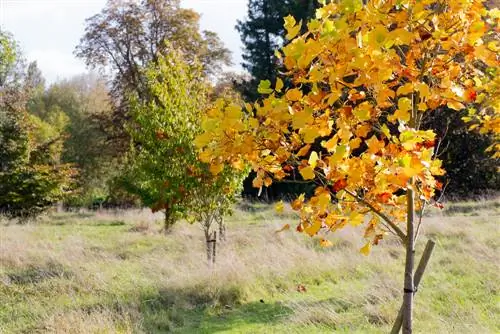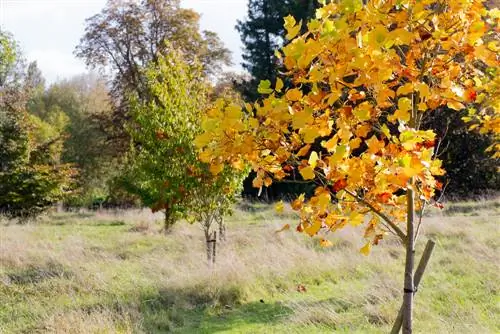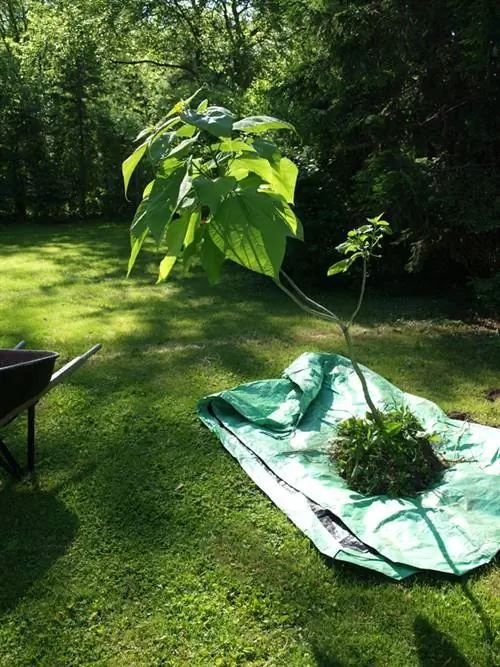- Author admin [email protected].
- Public 2023-12-16 16:46.
- Last modified 2025-01-23 11:21.
The tulip tree is quite attractive, but also a very tall tree. Therefore it needs a lot of space. If you didn't consider this when planting, the tree may have to be transplanted at some point, but that won't suit it.

How should you properly transplant a tulip tree?
When transplanting a tulip tree, you should pay particular attention to the sensitive roots and only transplant young trees. Ideally, you should not plant cuttings in the garden until after the first winter. Protect newly planted trees from frost with leaves or brushwood.
It is best to plant the tulip tree in its final location straight away. In addition to enough space, it needs a lot of sun and fresh but not wet soil. Reasons for transplanting later include waterlogging, too much wind and unsuitable soil conditions, which cannot be changed even with effort.
What do I have to consider when transplanting?
The tulip tree has very sensitive roots that must under no circumstances be injured when transplanting. This is not easy because the roots reach deep into the ground and spread quite far. Therefore, dig up the root ball as generously as possible. This is practically impossible with an almost fully grown tree.
When do I transplant a home-grown tulip tree?
With a lot of patience and the necessary knowledge, you can dare to experiment with propagation. Seeds are rarely found commercially. You can't always expect ripe seeds from your own tulip tree, you'll need a bit of luck for that.
Growing a tulip tree from cuttings is a little easier. However, these young trees are also quite sensitive at the beginning and are not hardy. They may only be transplanted into the garden after the first winter.
Does my transplanted tulip tree need winter protection?
If you have only (re-)planted your tulip tree in spring, you will protect the very sensitive roots of the young tree from the worst frost. This can be easily achieved with a layer of leaves, bark mulch or brushwood around the trunk. On the other hand, if the tulip tree has been in its location for two or three years, then it no longer needs winter protection.
The most important things in brief:
- If possible, only transplant young trees
- be sure to protect sensitive roots
- Plant out cuttings only after the first winter
- weigh the benefits and risks of old trees
Tip
Since the tulip tree has quite sensitive roots, you should avoid transplanting if possible.






